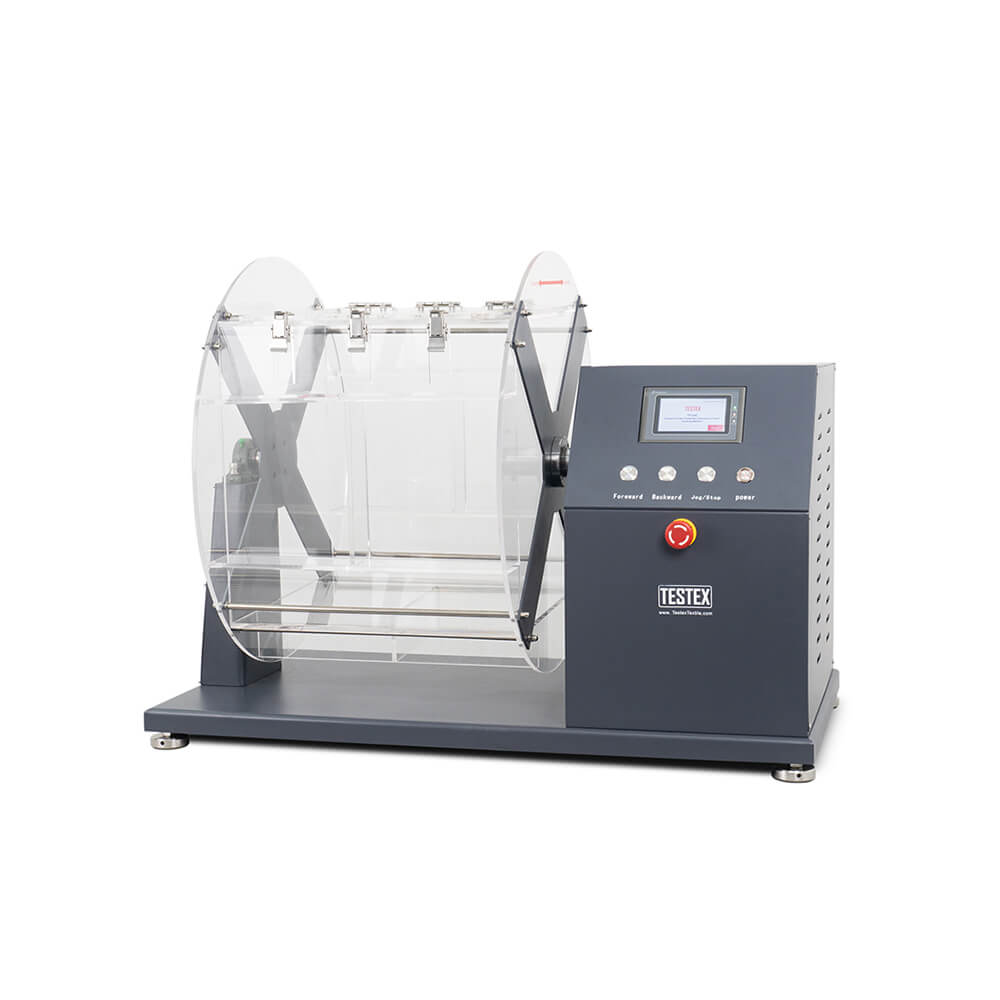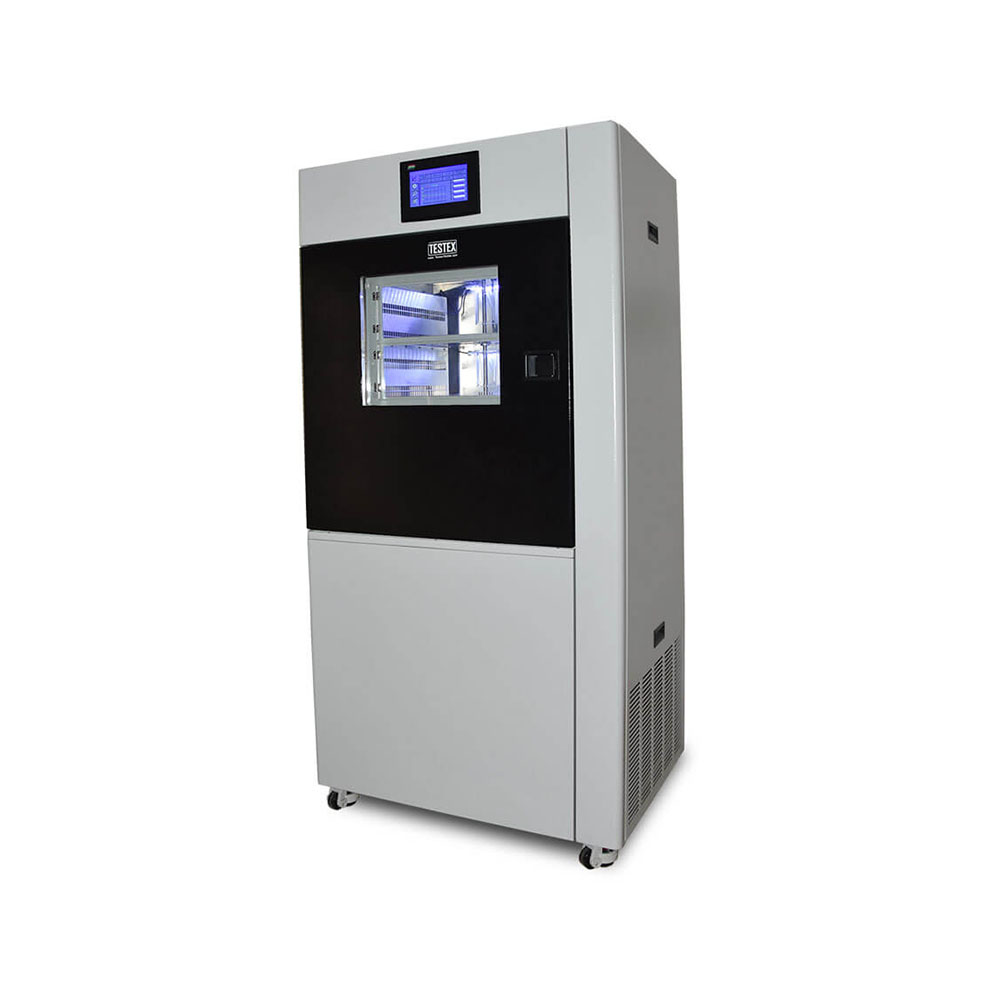In daily textile testing, do you ever have concerns about understanding the test reports? Is it difficult to distinguish whether the results in the test report are good or bad? Below, we will introduce the meanings behind the data in the results of common textile testing items.
Quality Characteristics
Abrasion Resistance
The test results for abrasion resistance are generally reflected in changes in appearance, total friction cycles, and mass loss. The commonly used method is to evaluate the fabric’s abrasion resistance based on the total number of friction cycles until the sample is damaged. The higher the number, the better the fabric’s resistance to wear and tear. For example, in GB/T 32614-2016 “Outdoor Sports Clothing – Storm Jackets,” the requirement for abrasion resistance is ≥10,000 cycles (no damage to the fabric’s front side). In FZ/T 81006-2017 “Denim Clothing,” fabrics with a weight of 339g/m2 or more require ≥20,000 cycles, while fabrics with a weight of 339g/m2 and below require ≥10,000 cycles.
Anti-Pilling Performance
The test results for anti-pilling performance are generally expressed in grades, with higher grades indicating better resistance to pilling. The rating is divided into 5 levels, with 5 being the best and 1 being the worst. In most product standards, the requirement for passing grade is level 3. Products containing wool may have lower requirements, typically requiring level 3 for first-grade products. Some products may have exemptions, such as brushed, raised, or planted fabrics, which may not be subject to assessment.
Down-proof Property
The test results for down-proof performance are expressed in the number of down feathers drilled out. The higher the number, the worse the result, indicating that the fabric’s performance in preventing down feathers from drilling out is poorer. Conversely, a lower number represents better performance. Different test methods may yield different results, and there is no comparability between methods. For example, in the commonly seen woven down jackets, according to the current version of GB/T 14272-2011, the requirement for passing grade is ≤50 feathers, first-grade requires ≤15 feathers, and top-grade requires ≤5 feathers.
Functional Testing Category
Three Protections – Waterproof, Oil-Repellent, Stain-Repellent
Waterproof Testing is conducted using the spray method, and the results are expressed in water resistance grades, with a maximum of 5. A higher grade indicates better resistance to water absorption by the fabric. For example, in GB/T 32614-2016 “Outdoor Sports Clothing – Storm Jackets,” Grade I requirements before washing are ≥4, and after washing are ≥3.
Oil-Repellent testing results are expressed in grades, with a maximum of 8.0. A higher grade indicates better resistance to absorbing oily liquids. In GB/T 21295-2014 “Technical Requirements for Clothing Physicochemical Properties,” the finished product requirement is not less than Grade 4.
Stain-Repellent results are expressed in grades, and different definitions exist for evaluating stain resistance within each method. For example, FZ/T 01118 states that when the initial color difference is equal to or below 3, and the test result’s color difference is 3-4 or higher, the sample is considered to have easy-to-clean properties. When the initial color difference is equal to or higher than 3-4, and the test result’s color difference is higher than the initial color difference by 0.5 or more, the sample is considered to have easy-to-clean properties.
Waterproof Testing – Hydrostatic Pressure Method
The test results are expressed in the static water pressure value of the specimen (kPa/cmH2O/mmH2O), with a larger value indicating better resistance to water penetration. In the case of ready-made garments, the sewn and unsewn parts will be assessed separately. For example, in GB/T 32614-2016 “Outdoor Sports Clothing – Storm Jackets,” Grade I requirements before washing are fabric ≥50kPa, fabric seam ≥40kPa; after washing are fabric ≥40kPa, fabric seam ≥30kPa. (Conversion relationship between static water pressure units: kPa = 10cm H2O = 100 mmH2O)
Moisture Permeability
The test results reflect the mass of water vapor passing through a unit area of the specimen in a specified time, expressed in g/(m2.h) or g/(m2.24h). Moisture permeability measures the ability to expel moisture from the body, with higher values indicating greater comfort when worn. Therefore, it contradicts static water pressure, providing the opposite effect. For example, in GB/T 32614-2016 “Outdoor Sports Clothing – Storm Jackets,” Grade I requirements before washing are ≥5000 g/(m2.24h), after washing are ≥4000 g/(m2.24h); and in FZ/T 81010-2018 “Windbreakers,” the requirements for top-grade, first-grade, and qualified products are consistent, without differentiation between pre-wash and post-wash, all set at ≥5000 g/(m2.24h).
When we hear about breathability requirements like 3000/3000 or 5000/5000 in the market, it refers to the requirements for static water pressure and moisture permeability.
Air Permeability
The test results indicate the rate at which air passes vertically through the specimen under specified test area, pressure drop, and time conditions (mm/s), representing the fabric’s air permeability. The evaluation of air permeability cannot be solely based on numerical values; it depends on the intended use. For example, fabrics used in summer need good breathability, while outerwear in winter requires lower breathability to ensure good windproof performance. For example, in the case of parachute fabric, if the breathability value is too high, it may not be able to support the weight of a person and could fall rapidly. On the other hand, if the value is too low, it may not descend properly. Therefore, the breathability level plays a crucial role in the performance of fabric used for parachutes. For instance, in FZ/T 81010-2018 “Windbreakers,” the requirement for air permeability is ≤50 mm/s.
UV Protection Performance
The test results are expressed in Ultraviolet Protection Factor (UPF), Ultraviolet Transmittance, and Ultraviolet Blockage. Different standards have different content and requirements. Taking the Chinese standard GB/T 18830 as an example, a product is considered “UV-protective” when UPF > 40 and Transmittance (UVA) AV < 5%. Both conditions must be met. For UV-protective products that meet these conditions, they are labeled as UPF 40+ when 40 < UPF ≤ 50, and UPF 50+ when UPF > 50.
Color Fastness Category
The test results for color fastness are generally expressed in grades, where a higher grade indicates a better resistance of the color to various external forces. Most color fastness ratings are divided into 5 grades, with 5 being the best and 1 being the worst. For example, in the strong standard GB 18401-2010, color fastness for B and C categories has a minimum requirement of 3, while category A has higher requirements. Water and perspiration color fastness require 3-4, and dry rubbing and saliva resistance color fastness require 4.
Dimensional Stability Category
The test results for dimensional stability are typically expressed with a “+” or “-” followed by a number. “+” indicates elongation, “-” indicates shrinkage and a smaller number after the symbol represents better dimensional stability of the fabric after testing. When the result is “0,” it means there is no change in the fabric’s size before and after the test. Common dimensional stability tests include water wash dimensional stability, dry cleaning dimensional stability, and steam ironing dimensional stability.
Strength Category
The test results for strength are generally expressed in force values, where a higher force value indicates better strength, meaning more force is required to break the sample. Common strength-related tests include tensile strength, bursting strength, tearing strength, seam strength, and seam slippage.
In the case of seam slippage with a fixed load method, the test measures the slip distance generated when applying a specified load. The result is compared based on the slip distance, where a smaller slip distance indicates better resistance to slippage. Many product standards have requirements for seam crack length (seam performance) ≤0.6cm, while some, like the current version of GB/T 14272-2011 for woven down jackets, specify a requirement of ≤0.4cm.
The post Unlocking the Secrets of Textile Test Reports: A Comprehensive Guide appeared first on Testex.













